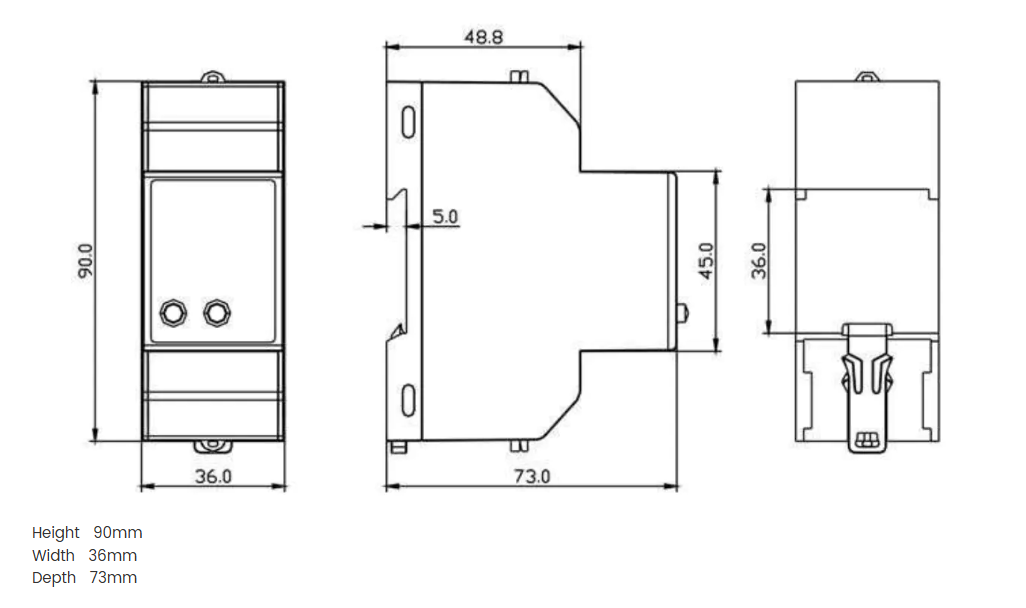| Brand | Wone |
| Model NO. | DEM2D Series Din-Rail 75mV DC Meter accordance with CE |
| Rated voltage | DC1kv |
| Rated normal current | 2000A |
| Rated frequency | 50(Hz) |
| Methods of Communication | RS485 |
| Series | DEM2D003 |
Description
It adopts a standard 75mV design, and configures the shunt of the corresponding specification according to the actual current in the field for measurement, and has a wide range of applications. RS485 communication, support Modbus protocol and DLT645 protocol, baud rate 9600bps, can use data centralized meter reading, equipment docking and parameter setting.
Features
RS485 communication: used for parameter setting, data reading; DTL645 protocol/Modbus Protocol.
DC metering: using shunt sampling, high measurement accuracy; can measure DC power, current, voltage.
Alarm function: Over-current alarm: When the current exceeds the CT1 value set by the meter, an alarm event occurs, and the alarm light on the electrical surface panel lights up (yellow light).
At the same time, the value of the corresponding alarm status register will change, and the user can read this register through communication to determine whether an over-current alarm has occurred.
Display: LCD with backlight ,Support Various parameters display,energy data and Instantaneous parameters.
Firmware upgrade: RS485 local upgrade.
Specifications
| Main |
|
|---|---|
| Range | DEM2D003 |
| Product or Componet Type | Energy meter |
| Country of origin | China |
| Complementary |
|
|---|---|
| Phase | Single Phase |
| Type of measurement | ----- |
| Metering type | Measurement |
| Device Application | Energy Charge |
| Accuracy class | Active power 1.0 |
| Rated Current | 2000A |
| Rated Voltage | DC 5V~1000V |
| Network Frequency | 50-60Hz |
| Technology Type | Electronic |
| Display Type | LCD display(LCD 6+2 = 999999.99kWh) |
| Impulse Constant | According to 1000imp/kWh, |
| Maximum value measured | 99999.99kWh |
| Tariff input | ---- |
| Communication port protocol | Modbus and DLT645 |
| Communication port support | RS485 |
| Local signalling | ------ |
| Number of inputs | ------- |
| Number of Outputs | -------------- |
| Output voltage | ----- |
| Mounting Mode | Clip-on |
| Mounting Support | DIN rail |
| Connections - terminals | ------- |
| Standards | CE |
| Environment |
|
|---|---|
| IP degree of protection | IP54 |
| Relative humidity | ≤95% |
| Ambient air temperature for operation | 25…70 °C |
| Ambient Air Temperature for Storage | 25…70 °C |
| Operating altitude | --- |
| Dimensions | 73mm*36mm*90mm |
| Packing Units |
|
|---|---|
| Unit Type of Package 1 | PCE |
| Number of Units in Package 1 | 1 |
| Package 1 Height | 92mm |
| Package 1 Width | 38mm |
| Package 1 Length | 75mm |
| Package 1 Weight | 1.000kg |
Connection Diagram

Dimensions







